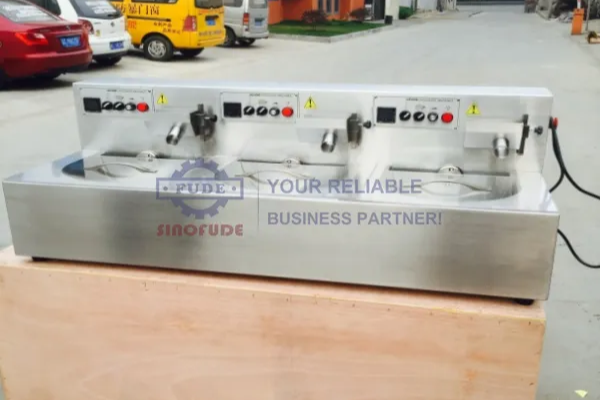Troubleshooting Guide of the Chocolate Machine
Troubleshooting Guide of the Chocolate Machine
To troubleshoot the chocolate-making machine, start by making sure that the temperature regulation of the chocolate maker is set correctly. If the temperature reading is low, it is likely that the chocolate is either too thick or too soft. You may also notice that the finished chocolate has bloomed or is lacking gloss. To fix this, use the Heat+ or Heat-buttons to raise or lower the heat.

The chocolate should flow into a cooling zone at the correct temperature. The temperature is usually displayed on the control panel. Make sure that the temperature of the chocolate is not too hot or too cold. If the temperature is too high, it will lead to sugar blooming. To avoid this, you must make sure that the humidity in the cooling section is between 63 and 70%. If the chocolate is too warm or too cool, it may not be ready for the cooling process.
There could be a variety of problems with a chocolate-making machine. The temperature may be too high, the machine may not be calibrated properly, or the molds may not be the correct size. To solve this, make sure that the molds are the right size and type. If the molds are too large or too small, you may need to change the temperature and type of the molds. If the chocolate is too soft or too thick, you need to check the mixing concentrate.
Some of the most common problems with a chocolate-making machine include improper mixing of ingredients and uneven cooling. If the latter occurs, you should contact the manufacturer of your chocolate-making machine. Often, a warranty is available on the product. The terms and conditions of this warranty will vary, but most manufacturers cover any faults caused by the machine itself. If the chocolate production is inconsistent, the manufacturer should replace the component.
There are several other problems that you might encounter with the chocolate-making machine. Depending on the type of chocolate, the temperature of the machine may not be optimal or too thick. The temperature of the chocolate should be at an optimal level, otherwise, it will fail to set. The machine should be calibrated before it can make the chocolate. It is crucial to identify the type of molds for a particular model of chocolate-making machine.
The first problem that may occur with the chocolate-making machine is that the chocolate mixture may not adhere to the molds. Then, the chocolate will not set properly. After it sets, the coating process will be ruined. A defective coating will ruin your finished chocolate product. A faulty chocolate-making machine will not produce quality results. When you purchase chocolate-making machinery, make sure it is a reputable manufacturer of such products.
When the chocolate has been over tempered, the melting process can cause the chocolate to become thick. The chocolate must be cooled to an optimum temperature before it is removed from the molds. If the melting process is incomplete, the melted chocolate will not adhere to the molds. To avoid such a problem, you must first ensure that the air vents are blocked and the filling is properly mixed. When these problems have been resolved, you can resume the normal functioning of the machine.
The chocolate-making machine has several problems. In some cases, the ingredients may not be mixed well. Another problem may be the cooling process. It can even result in a faulty coating. It is best to check the mixing concentrate before you start the production process. Once you have done this, the chocolate-making machine should be able to produce the desired products. If there are too many fillings in the chocolate, you should check the filling consistency.
Besides the heating system, the cooling section of the chocolate-making machine is also important. The humidity in the cooling section should be between 70 and 75 percent. Too much humidity in the air will cause the chocolate to stick to the mold. To avoid such issues, you should make sure that the temperature of the cooling section is between 63 and 70%. This is because too much moisture will cause the chocolate to stick and become too hard.
 Telephone :+86-13917870833
Telephone :+86-13917870833 WhatsApp :8613917870833
WhatsApp :8613917870833 Email :info@sinofude.com
Email :info@sinofude.com














